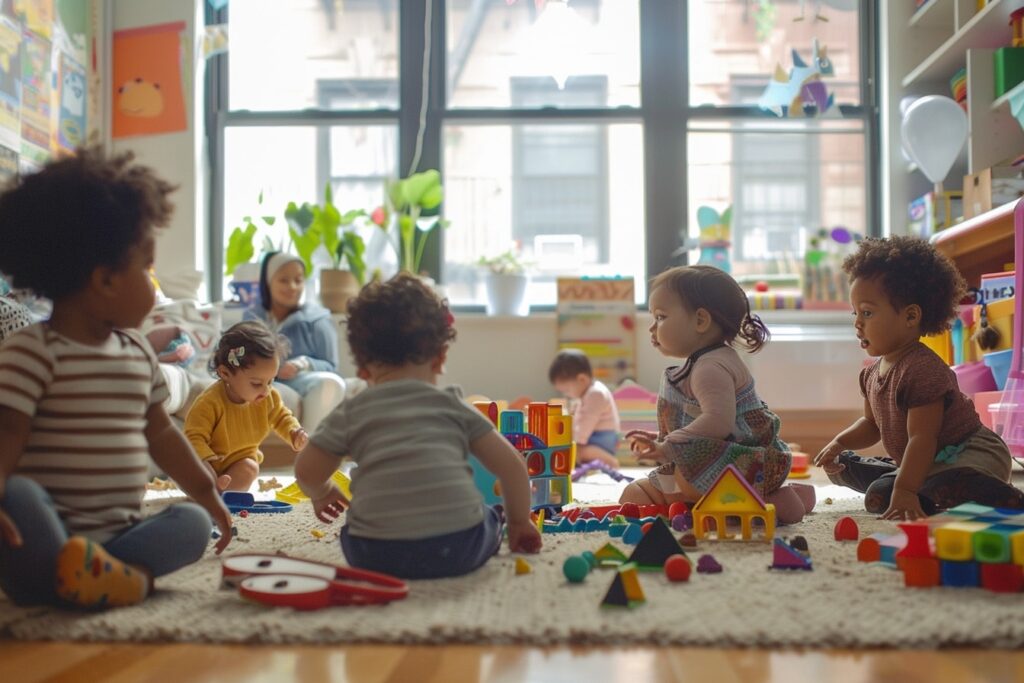Table of Contents
ToggleCelebrating Diversity: Cultivating an Inclusive Mindset in Your Baby
Here’s a question that might change everything you think you know about raising your child:
What if the most powerful gift you could give your baby isn’t found in any store, can’t be measured by milestones, and costs absolutely nothing?
I’m talking about something that will shape how they see the world, how they treat others, and ultimately, who they become. And the shocking part? Most parents don’t realize they’re either building this foundation every single day – or accidentally tearing it down.
Introduction
It’s Tuesday morning, and you’re in your living room. Toys everywhere. Your little one is completely absorbed in a book – you know, one of those beautiful ones with characters from every corner of the world, each with their own story to tell. And as you watch those tiny fingers turn each page, something hits you.
This moment? This simple, ordinary moment? It’s actually extraordinary.
Because here’s what most parenting advice won’t tell you: raising a child isn’t just about keeping them safe, fed, and happy. It’s about preparing them for a world that’s beautifully, wonderfully, sometimes messily diverse. And that preparation? It starts way earlier than you think.
🚨 Shocking Truth #1: The “Diversity Window” Closes Earlier Than You Think
Research shows that babies as young as 6 months old begin to show preferences based on race and ethnicity. By age 3, children have already absorbed many of society’s biases – whether we’ve taught them intentionally or not. The window to shape an inclusive mindset isn’t somewhere in the future. It’s right now, in this very moment.
For many parents navigating this journey, it feels like threading a needle while riding a roller coaster. We’re living in a society that’s often divided, sometimes excluding, and yet we want our children to grow up with open hearts and minds. We want them to see beauty in differences, not fear. To embrace diversity, not retreat from it.
And here’s the thing – cultivating an inclusive mindset in our babies isn’t just a nice idea. It’s a responsibility. Not in that heavy, burdensome way, but in the way that matters. The way that says, “I’m going to do everything I can to help my child become someone who makes this world better.”
The research is clear – and honestly, pretty amazing. When children are exposed to diverse cultures and perspectives from a young age, something profound happens. We’re not just talking about tolerance here. We’re talking about fostering genuine empathy, sparking creativity, and building critical thinking skills that will serve them for life.
But here’s what resonates even more than any research study: it’s the everyday moments. The way we choose which stories to read at bedtime. The way we cook meals that tell stories of places we’ve never been. The way we welcome friends from all walks of life into our homes and hearts.
In this article, we’re going to explore something important together. Not in a preachy, here’s-what-you-should-do way, but in an honest, let’s-figure-this-out-together way. We’ll talk about the real stuff – from choosing the right toys and books to navigating those awkward conversations about race and identity that make every parent squirm a little.
This is a journey of discovery and growth. And the best part? Every small step you take today ripples out into a more compassionate, inclusive future – not just for your child, but for all of us.
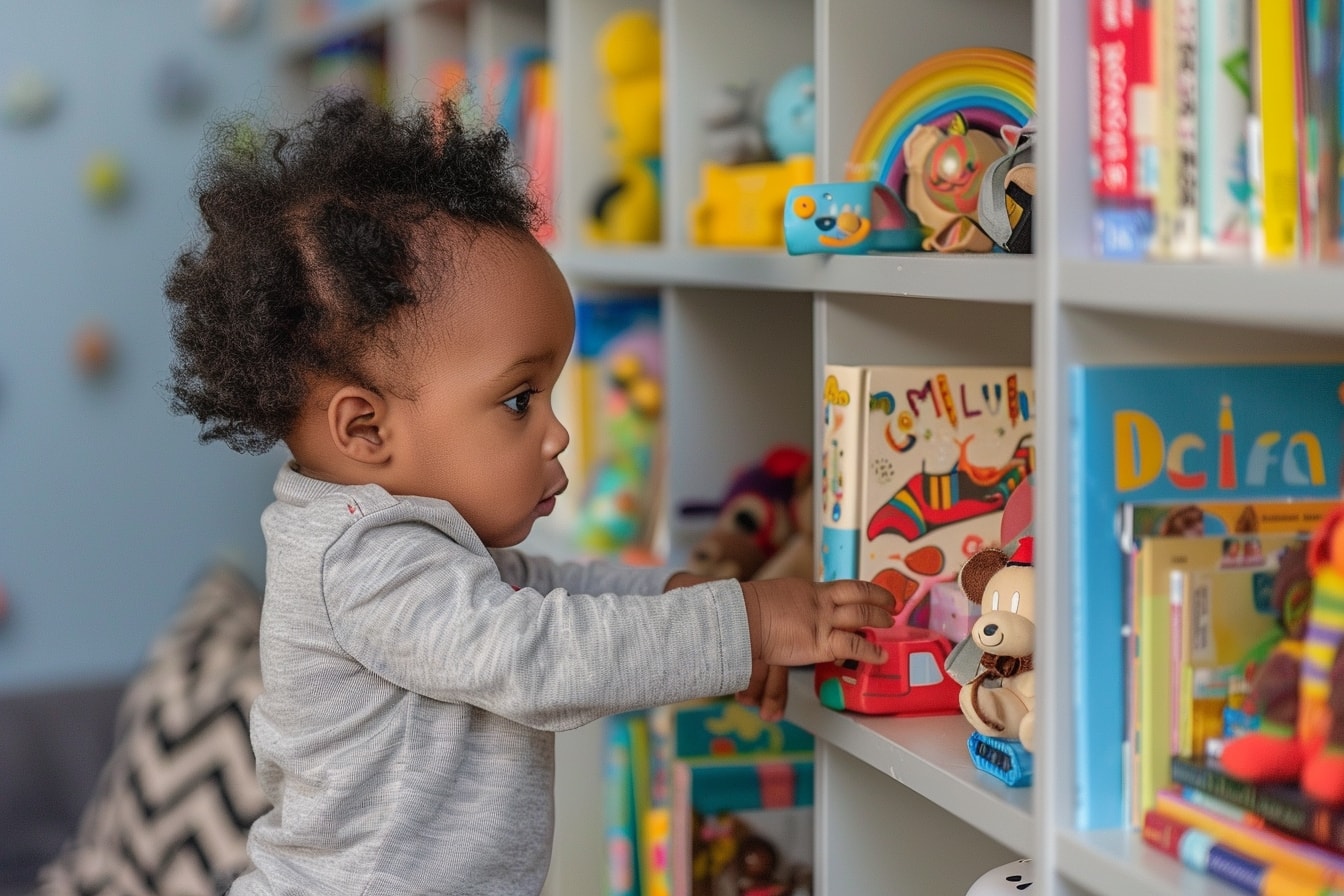
Embracing Multicultural Toys and Books
Think about this for a moment:
When your child plays with their toys or reads their books, whose faces do they see? Whose stories do they hear? Because here’s what nobody tells you – those faces and stories aren’t just entertainment. They’re mirrors and windows. Mirrors that help children see themselves, and windows that show them the vast, beautiful world beyond their own experience.
I’m going to be straight with you. When it comes to fostering an inclusive mindset, multicultural toys and books are absolute powerhouses. They’re not just objects – they’re keys that unlock doors to worlds your child might never otherwise encounter.
Imagine the pure joy on your little one’s face as they explore a toy market bursting with colors and sounds from different cultures. Or watch them get lost in a book filled with adventures from places they can’t even pronounce yet. These aren’t just fun moments – they’re laying groundwork. Building bridges. Opening minds.
Flip These Cards to Reveal Common Mistakes Parents Make
Tap to Reveal Mistake #1 →
Thinking “Any Diversity Is Good Diversity”
Not all diverse toys and books are created equal. Some perpetuate stereotypes rather than challenge them. The key is choosing resources that show authentic, nuanced representation – not just surface-level diversity.
Tap to Reveal Mistake #2 →
Waiting Until Your Child “Notices” Differences
By the time children verbally notice racial or cultural differences, they’ve already formed opinions. The research shows that babies as young as 6 months show preferences. Start early – way earlier than feels necessary.
Tap to Reveal Mistake #3 →
Buying Everything at Once
Parents often feel overwhelmed and buy a ton of “diverse” materials all at once, then wonder why their child isn’t engaged. The secret? Curate slowly and thoughtfully. Quality and intention beat quantity every time.
But let’s be real – with the overwhelming number of options out there, choosing the right toys and books can feel like trying to find a needle in a haystack. While wearing a blindfold. In a storm.
Your Action Plan for Choosing Multicultural Toys and Books
- Do Your Homework First: Before clicking “add to cart,” take five minutes to research. Read reviews from parents and educators who share your values. Look for books by own-voices authors – people writing from their own cultural experience, not just about it.
- Representation Isn’t Optional: Seek out toys and books where diversity is the norm, not the exception. Your child should see characters with different skin colors, family structures, abilities, and cultural backgrounds woven naturally into stories – not just in “special” books about diversity.
- Less Is More (Really): Instead of drowning your home in stuff, curate a meaningful collection. Choose toys that encourage imaginative play and problem-solving. Pick books that spark questions and conversations. Quality depth beats quantity every single time.
💡 Insider Secret Most Parents Miss:
The most powerful multicultural books aren’t labeled “diversity books.” They’re the ones where diverse characters are simply living their lives, going on adventures, solving problems – where their cultural identity is present but not the entire point of the story. This teaches children that diversity is normal, natural, and woven into the fabric of life itself.
As you bring these toys and books into your child’s world, pay attention. Notice what captures their imagination. What toys do they reach for again and again? Which stories do they want to hear on repeat? These aren’t random choices – they’re cues, invitations to go deeper into conversations about cultural diversity and identity.
And here’s the part that matters most: this journey isn’t just about keeping your kid entertained. It’s about something bigger. You’re planting seeds for a more inclusive, empathetic future. By surrounding your children with diverse perspectives and experiences, you’re not just preparing them for the world – you’re empowering them to make it better.
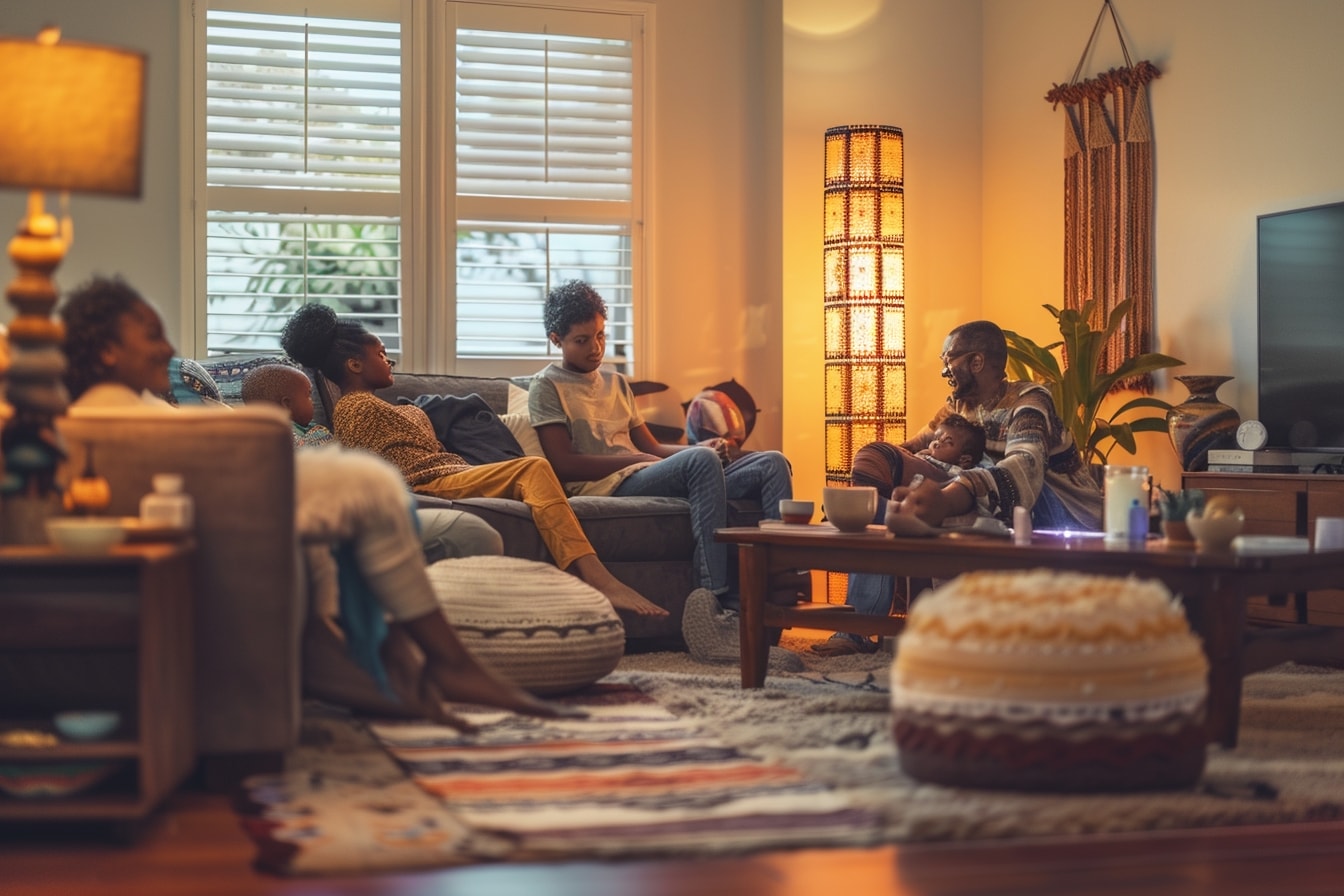
Creating a Welcoming Environment
Your home is your child’s first classroom. The first place they learn what’s normal, what’s valued, what matters. And right now, your home is teaching them something – whether you planned it or not.
So here’s the question: What message is your space sending?
Creating a welcoming environment isn’t about checking boxes or proving how woke you are. It’s about intentionally shaping a space where every child who walks through your door – including your own – feels like they belong. Where diversity isn’t a special occasion thing, but woven into the everyday fabric of life.
Hanging a dreamcatcher and a kokeshi doll doesn’t automatically create inclusivity. What matters is the intention and understanding behind it. Are these items connected to real relationships, experiences, or learning? Or are they just aesthetic choices? Children can sense the difference.
Transform Your Space (Without Overthinking It)
- Decorate with Meaning: Add elements from different cultures to your home, but make them count. Hang artwork by artists from diverse backgrounds. Display textiles that tell stories. Fill your shelves with items from travels or gifts from friends who share their culture with you. Each piece should have a story you can tell your child.
- Celebrate Everything: Weave celebrations from various cultural traditions into your family calendar. Light candles for Diwali, make moon cakes for Mid-Autumn Festival, celebrate Eid with special treats. These rituals aren’t about appropriation – they’re about appreciation, especially when connected to real relationships in your community.
- Make Language Matter: If you speak multiple languages, use them. If you don’t, it’s never too late to start learning together. Label items around your home in different languages. Sing songs in different tongues. Read bilingual books. Your child’s brain is wired right now to absorb languages in a way it never will be again.
But here’s what creating a welcoming environment really comes down to: it’s less about what hangs on your walls and more about what lives in your heart. It’s about creating a space where belonging isn’t something you have to earn – it’s just there, automatically, for everyone.
Self-Assessment: Rate Your Home’s Inclusivity
Think about the conversations that happen in your home. Do you talk openly about differences? Do you acknowledge when someone looks different or celebrates differently – not in a way that makes it weird, but in a way that makes it wonderfully normal?
Because that’s the secret sauce. Creating an environment where diversity isn’t a special topic we bring out for teachable moments, but something that’s simply part of the air your family breathes.
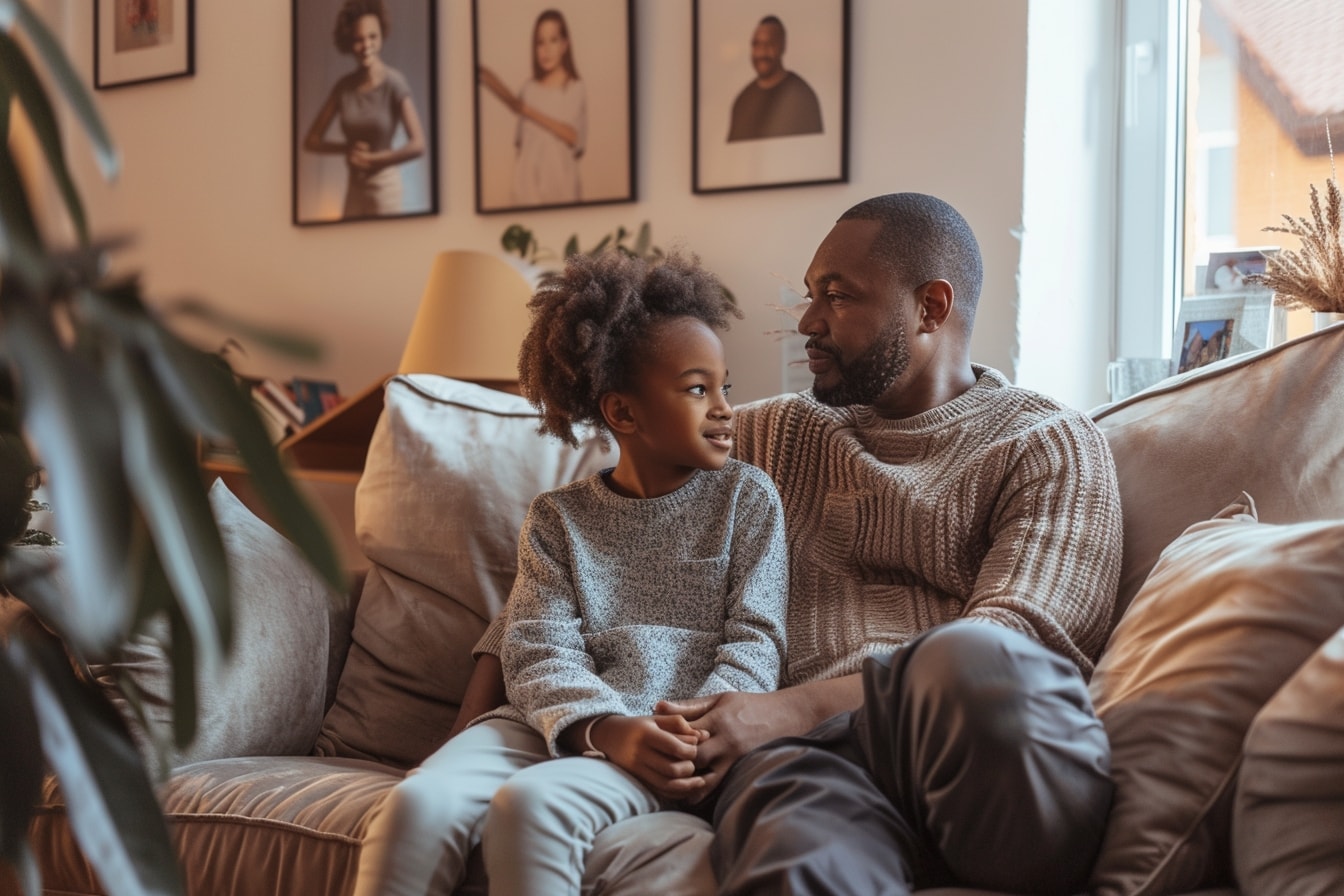
Navigating Difficult Conversations
That moment every parent dreads:
You’re at the park, and your toddler points at someone and says, loudly, “Why does that person look different?” Your face gets hot. You want to disappear into the sandbox. You fumble for words and probably say something awkward like “Shh, we don’t talk about that.”
But here’s what nobody tells you: this is exactly the moment you’ve been waiting for.
I know, I know. Talking about race, identity, and differences with young children feels uncomfortable. Maybe even risky. What if you say the wrong thing? What if you mess them up? What if you accidentally teach them to be more aware of differences instead of less?
🚨 Shocking Truth #2: Avoiding “The Talk” Doesn’t Protect Your Child – It Harms Them
Studies show that children raised in “colorblind” households – where parents avoid discussing race and differences – actually develop more biased attitudes than children whose parents openly discuss these topics. Silence doesn’t create equality. It creates confusion and leaves children to draw their own conclusions, which are often influenced by the biases they absorb from society.
Let me share something that changed my perspective: children are already noticing differences. From the moment they can see, they’re cataloging information about the world. The question isn’t whether they’ll notice that people look different, celebrate differently, or speak differently. They will. The question is: who’s going to help them make sense of what they’re seeing?
Will it be you, with intention and love? Or will it be whatever messages they absorb from media, peers, and society at large?
How to Handle Those Awkward Moments (Like a Pro)
- Never Shush Them: When your child points out a difference – “That person has dark skin!” – resist the urge to quiet them. Instead, say something simple and positive: “Yes, people have different skin colors, and that’s wonderful! We all look different in beautiful ways.” Keep it casual, brief, and positive.
- Use Real Words: Don’t dance around topics. Use accurate language like “Black,” “Asian,” “disability,” “two moms.” Euphemisms teach children that these things are shameful or awkward. Direct, matter-of-fact language normalizes diversity.
- Answer the Question They’re Actually Asking: When a child asks “Why is that person in a wheelchair?” they’re usually not asking for a medical diagnosis. They’re asking “Why are they different from what I usually see?” Keep it simple: “Some people’s legs don’t work the same way yours do, so they use wheelchairs to help them move around. Pretty cool, right?”
- Make It About Curiosity, Not Judgment: Frame differences as interesting, not inferior. “Wow, their family celebrates different holidays than ours. Let’s learn about them!” This teaches children that diversity adds richness to life.
But here’s what makes these conversations actually work: authenticity. Your child can sense when you’re uncomfortable, when you’re performing, when you’re not being real. They don’t need you to be perfect. They need you to be genuine.
Research from Harvard shows that children as young as 3 years old can express bias and preference based on race. By age 5, these preferences often mirror adult levels of bias. The idea that children are “too young” to understand actually translates to “old enough to absorb bias, but too young to have it challenged.”
And when you do mess up – because you will, we all do – own it. Show your child that growth is part of the journey. “You know what? I don’t think I explained that very well. Let me try again.” This teaches them something incredible: that learning and evolving is not just okay, it’s expected.
These conversations aren’t one-time events. They’re ongoing dialogues that evolve as your child grows. Start simple when they’re young. Get more nuanced as they mature. But whatever you do, don’t wait for the “right time.” The right time is whenever your child shows curiosity.
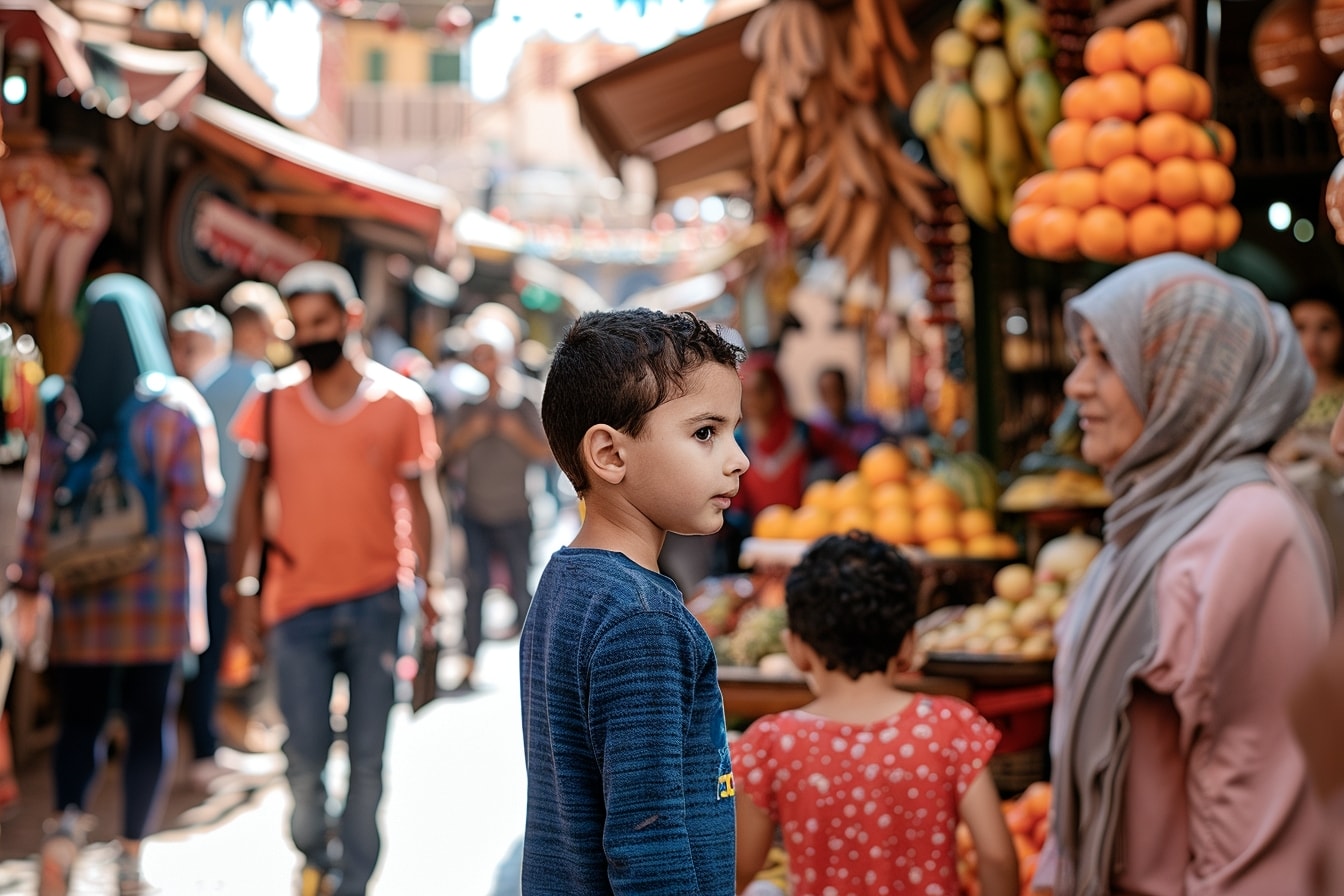
Engaging with Diverse Communities
Here’s an uncomfortable truth: you can read all the diverse books, buy all the multicultural toys, and have all the right conversations, but if your child’s actual lived experience is homogeneous, you’re missing the most important piece of the puzzle.
Real inclusion isn’t theoretical. It’s lived.
Think about your child’s day-to-day life. Their playmates. The people they see at the park. The families they interact with at daycare or preschool. The faces they encounter at the grocery store, the library, the doctor’s office. Who are they actually engaging with?
💡 Hard Truth That Will Make You Uncomfortable:
If everyone in your child’s real life looks, talks, and lives exactly like your family does, then all those diverse books and toys are just performative. Children learn more from what they experience than from what we tell them. You can’t read your way into genuine inclusivity – you have to live it.
Your Action Plan: Click to Mark Complete
☐ Audit Your Current Circle
Take an honest look at who’s actually in your child’s life right now. Not who you wish was there, but who actually is. The playmates, the families you spend time with, the community you’re part of. This isn’t about judgment – it’s about awareness.
☐ Seek Out Cultural Events
Find festivals, parades, and celebrations in your community that showcase different cultures. Chinese New Year celebrations, Caribbean festivals, Día de los Muertos events. Go not as tourists, but as learners and participants.
☐ Diversify Your Spaces
Where does your family spend time? If your playground, library story time, and playgroups are all homogeneous, intentionally seek out different spaces. This might mean driving a bit further or adjusting your schedule.
☐ Build Real Relationships
This is the most important one. Don’t just show up to diverse spaces – build genuine friendships with families from different backgrounds. Invite them over. Share meals. These real relationships are what make diversity come alive for your child.
☐ Get Involved
Volunteer at multicultural centers. Join cultural exchange programs. Participate in community service projects that bring different communities together. Show your child that inclusion is something you actively choose, not just passively support.
I’m going to be straight with you about something that makes people uncomfortable: if you live in a predominantly homogeneous area, you need to work harder. It’s not impossible, but it requires intention. It means seeking out diverse communities online, traveling when you can, and being deliberate about the connections you make.
And yes, the internet offers incredible opportunities here. Your child can connect with pen pals from different countries. Join virtual cultural exchange programs. Participate in online book clubs with kids from diverse backgrounds. Technology, used thoughtfully, can bridge geographical gaps.
But here’s what engaging with diverse communities really teaches your child: that diversity isn’t something to study – it’s something to experience. To enjoy. To learn from and with.
The Real Magic Happens Here:
When your child has actual friendships with kids from different backgrounds, something shifts. Diversity stops being an abstract concept and becomes part of their normal. Their best friend might celebrate different holidays, speak a different language at home, or have a family that looks different from yours. And that’s not special – it’s just their life. That’s the goal.
By exposing your children to diverse communities and experiences, you’re not just expanding their worldview – you’re literally reshaping how their brain categorizes “us” and “them.” Research shows that children with diverse friendships have larger, more inclusive definitions of who belongs in their in-group. Everyone becomes “us.”
So step out of your comfort zone. Have those authentic interactions. Build those real relationships. Because the most meaningful connections aren’t forged through observation – they’re forged through genuine participation and engagement.
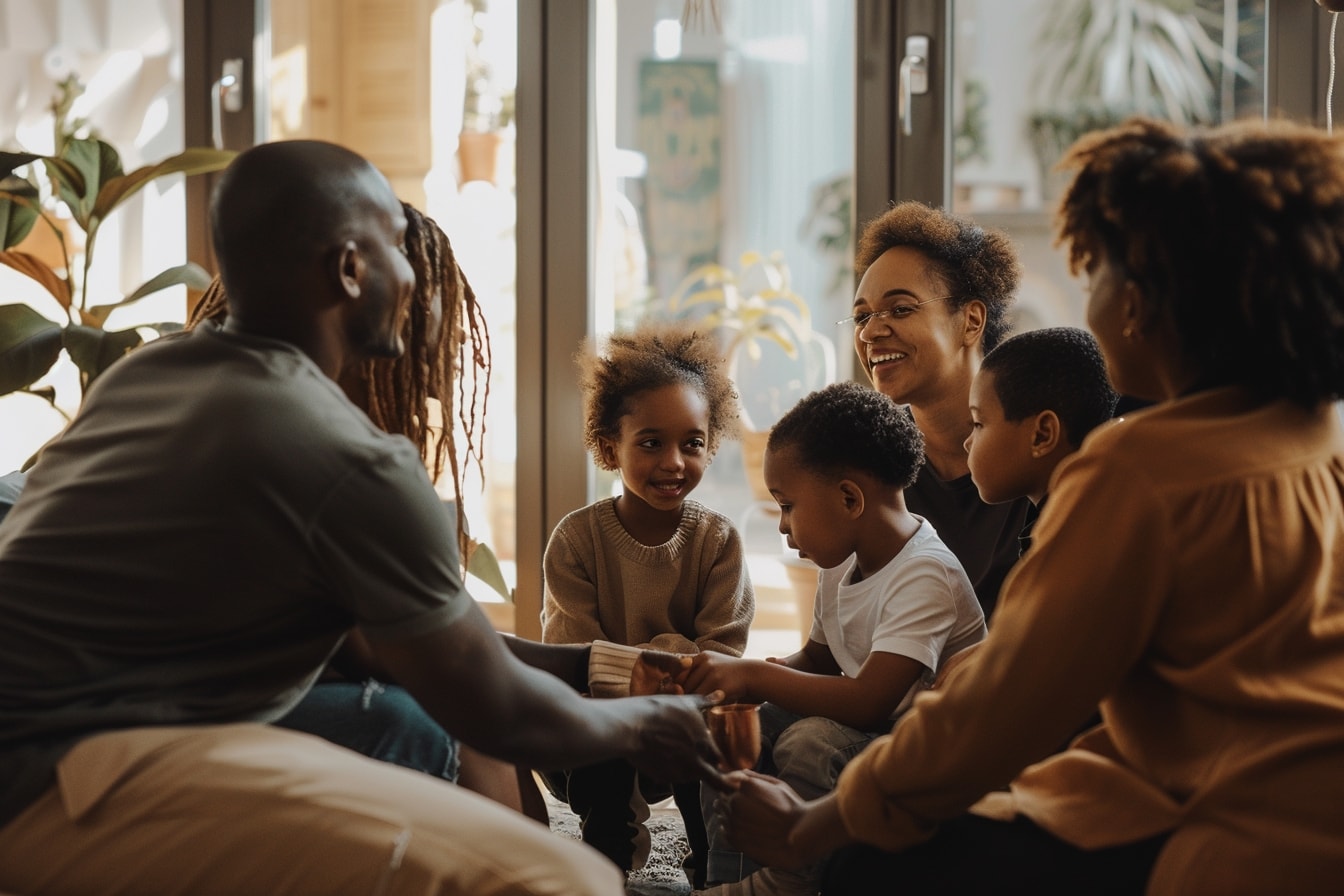
Leading by Example
Here’s something that’ll keep you up at night: your child is watching you. Always. They’re watching how you react when someone different sits next to you on the bus. They’re noticing which friends you invite over and which you don’t. They’re absorbing your body language, your tone, your unconscious reactions.
You can buy all the right books, say all the right words, and create the perfect inclusive environment. But if your actions don’t match your words? Your child will know. And they’ll follow what you do, not what you say.
🚨 Shocking Truth #3: Your Unconscious Biases Are Already Teaching Your Child
Studies using eye-tracking technology show that babies as young as 9 months old look where their parents look – and for the same duration. When parents show unconscious bias by looking away from people who are different, babies notice and mirror that behavior. You can’t fake inclusion. Your child is learning from your instinctive reactions, not your intentional teachings.
Let me share something that changed how I think about parenting: you don’t have to be perfect. You just have to be committed to growth.
Leading by example isn’t about pretending you have it all figured out. It’s about showing your child what it looks like to continuously work on yourself, to acknowledge your mistakes, to learn and evolve.
How to Actually Walk the Talk
- Check Yourself (Regularly): Be brutally honest about your own biases. We all have them. The question is whether we’re aware of them and actively working to challenge them. Notice your immediate reactions to people who are different. Question where those reactions come from.
- Call Out Stereotypes (Especially Your Own): When you catch yourself making assumptions based on race, gender, ability, or background – say it out loud. “You know what? I just realized I made an assumption about that person, and that wasn’t fair.” Show your child that recognizing bias is the first step to changing it.
- Make Kindness Your Default: Show your child that compassion isn’t conditional. Help the neighbor who needs it, regardless of who they are. Stand up for someone being treated unfairly. Offer genuine warmth to everyone you encounter. These small actions teach volumes.
- Diversify Your Own Circle: Look at your own friendships and community. If everyone in your life looks and thinks like you do, your child notices. Actively cultivate genuine friendships across different backgrounds – not for show, but for real connection.
But here’s the most powerful thing you can do: be vulnerable about your learning journey. When you mess up – and you will – admit it. “I handled that wrong. I’m learning too, and I’m going to do better next time.” This teaches your child something incredible: that personal growth isn’t a destination, it’s a lifelong journey.
When you don’t know something about a culture or experience, say so. “That’s a great question. I don’t know much about that – let’s learn together!” This models curiosity over judgment, humility over arrogance. Your child learns that not knowing is okay; not trying to learn isn’t.
Pay attention to the media you consume, the jokes you laugh at, the comments you make when you think your child isn’t listening. Because they are listening. Always.
Are you watching shows with diverse casts and storylines? Are you listening to music from different cultures? Are you reading books by authors from varied backgrounds? Your child is absorbing all of it, learning what you value by what you choose to bring into your life.
The Bottom Line:
Your child doesn’t need you to be perfect. They need you to be authentic, committed, and willing to grow. They need to see that leading an inclusive life isn’t about performing – it’s about being genuinely open, genuinely curious, and genuinely caring about all people.
So be the change you want to see. Not in a performative, look-at-me-being-inclusive way, but in a genuine, this-is-who-I-am-and-who-I’m-becoming way. Because the most profound lessons are taught not through words, but through the everyday choices we make and the person we choose to be.
Moving Forward: Your Next Steps
We’ve covered a lot of ground together. From the toys on your shelves to the conversations at your dinner table to the communities you engage with. And maybe you’re feeling a bit overwhelmed right now. That’s okay. That’s actually normal.
Here’s what I want you to remember: cultivating an inclusive mindset in your baby isn’t about doing everything perfectly. It’s about doing something consistently.
Every book you read that features diverse characters matters. Every conversation you have about differences matters. Every time you challenge a stereotype or expand your child’s world, it matters. Small actions, repeated over time, create seismic shifts.
Throughout this journey, we’ve uncovered some uncomfortable truths. That the “diversity window” closes earlier than most parents realize. That avoiding conversations about differences actually increases bias. That your unconscious reactions teach more than your intentional words.
But we’ve also discovered something beautiful: that you have incredible power to shape your child’s worldview. Right now, in these early years, you’re not just raising a child – you’re raising a future adult who will either perpetuate division or help heal it.
Celebrating diversity and fostering inclusivity isn’t just about being a good person or checking boxes. It’s about recognizing that diversity is woven into the fabric of human experience. It’s about teaching our children that differences aren’t threats – they’re gifts. That empathy and understanding aren’t weaknesses – they’re our greatest strengths.
💡 The Ultimate Truth:
Your child won’t remember most of the toys they played with or even most of the books you read. But they’ll remember how you made them feel. They’ll remember whether their questions were welcomed or shut down. They’ll remember if their home felt open or closed. They’ll remember the values you lived, not just the ones you preached. That’s what will shape them.
So as we close this conversation, carry forward what resonates. Take what works for your family and leave what doesn’t. But whatever you do, don’t let this moment of awareness pass without action.
Start somewhere. Start small if you need to. But start.
Because every step you take toward cultivating an inclusive mindset in your baby isn’t just about your child – it’s about all of us. It’s about creating a world where everyone feels valued, respected, and loved. Where diversity isn’t just tolerated but celebrated. Where inclusion isn’t a buzzword but a reality.
And that world? It starts in your home, with your choices, today.

Want to take your knowledge to the next level? Check out these must-read articles:
Step into Sue Brown's World of Baby Care, where you'll find a treasure trove of knowledge and wisdom waiting to be explored. Sue's dedication to providing accurate and up-to-date information on baby care shines through in every article, blog post, and resource she shares. From newborn essentials to sleep training tips, breastfeeding advice to nurturing your baby's development, Sue covers a wide range of topics that are essential for every parent to know. Her warm and compassionate approach creates a sense of community and reassurance, making her website a safe haven for parents seeking guidance and support. Let Sue Brown be your partner in this beautiful journey of parenthood, as she empowers you to create a loving, nurturing, and thriving environment for your little one.
- Indoor Air Quality for Infant Respiratory Health - October 20, 2025
- Positive Discipline Foundations: Setting the Stage From Infancy - October 18, 2025
- 2025’s Most Innovative Baby Products Worth the Investment - October 16, 2025

